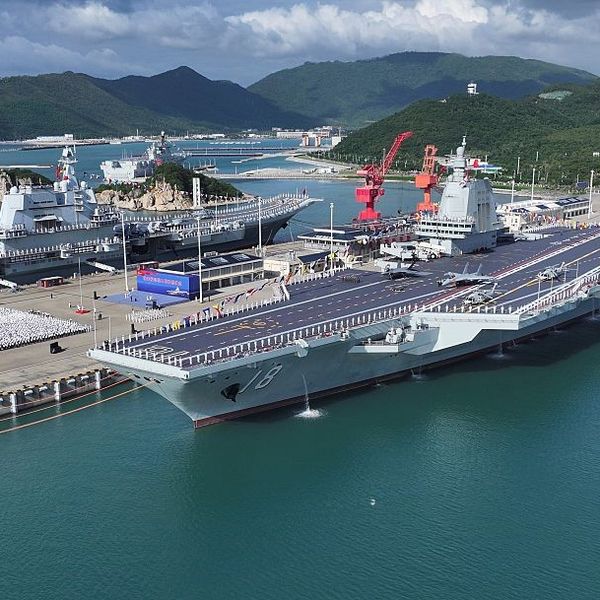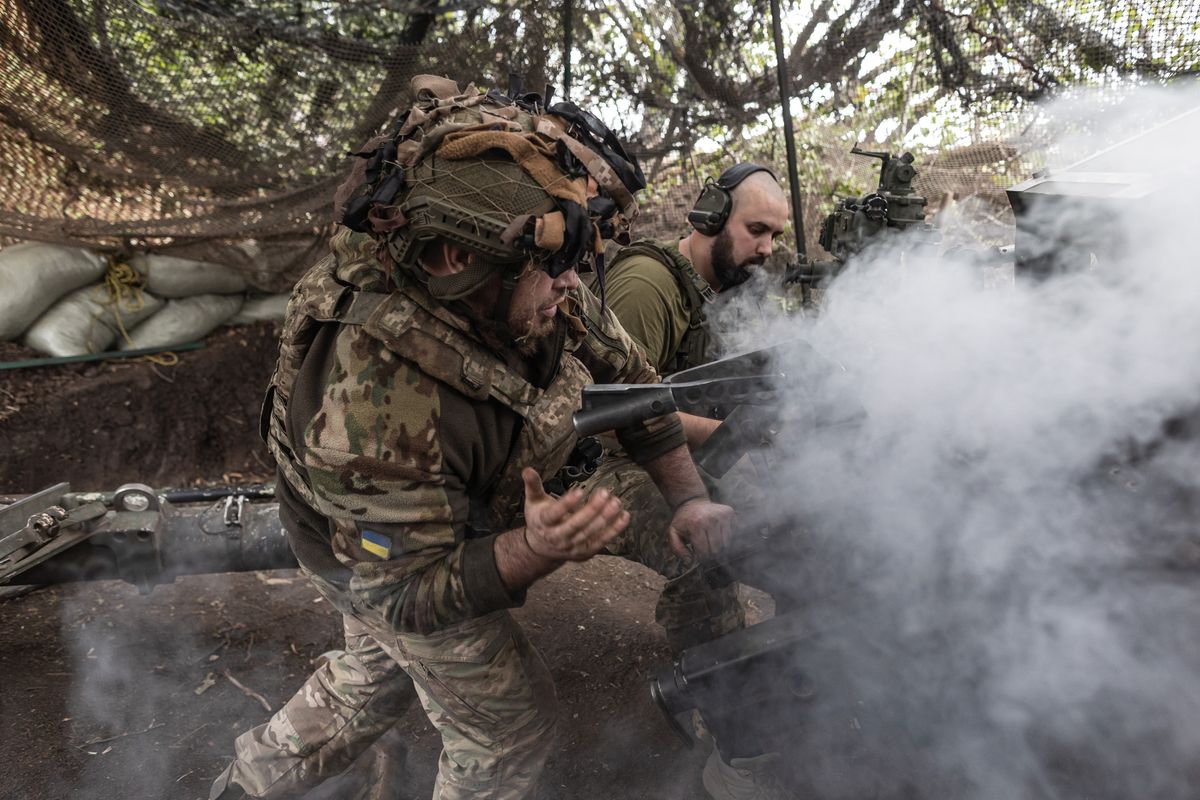How COVID-19 Revealed the Menace of China’s United Work Front Department
William O'Hara is the senior China planner in the J5 Directorate at U.S. Special Operations Command. He has served primarily in the US intelligence community as an intelligence analyst and planner focusing on China. The views expressed are his own and do not reflect the views of U.S. Special Operations Command, the Department of Defense, or the U.S. government.
OPINION — The Coronavirus pandemic ushered in a distinctly elevated level of outbound communication from the Chinese government with messages directly targeting Americans. Those communications often coincided with statements coming from individuals in the US, yet the power of the combined messages wasn’t always obvious to the average American. And that is the point.
For example, on July 22, Chinese scientist Dr. Yi Rao shared a sad and tragic story with The New York Times, saying that in his opinion, had his New York City-based uncle lived in Wuhan, China instead of in the US, he may not have died from COVID-19. It was a heartfelt story, one that shared the grief of family loss that resonated with Americans.
Dr. Yi’s commentary felt credible and was backed by his scientific credentials. But whether intentional or not, he conflated his scientific and personal experience in painting a picture of how well China fared in responding to COVID-19. The intertwined narrative conveniently supported broader Chinese Communist Party (CCP) attempts to cover up the origin of the virus and undercount Chinese cases. By attaching personal sentiments, Dr. Yi’s story appeared to inoculate the CCP from criticism and scrutiny. But as Secretary Xi Jinping said in 2014, Central Foreign Affairs Work “is necessary to increase China’s soft power, tell China’s story well, and conduct external propaganda well.”
It could be that the CCP was attempting to shape the perceptions of international institutions like the World Health Organization, political leaders at the national and sub-national level, and foreign citizens into believing the CCP is benevolent. While this incident may appear to be a new form of influence, the CCP has long developed this capability through the United Front Work Department (UFWD).
The CCP has always had the channels and institutions in place to execute these types of influence and subversive operations, but the Coronavirus pandemic presented a window of opportunity to highlight these practices. The UFWD, the CCP’s principle overseas propaganda and influence arm, is largely behind current operations and represents an underlying threat not only to US political, cultural, and economic freedoms, but to democracies elsewhere as well.
The UFWD at its core, shapes, molds, and cultivates the CCP’s image both domestically and internationally to ‘tell China’s story’, a story of a China whose rise is inevitable and unstoppable, whose political and economic systems are superior to democratic countries, and one where those countries should accept these realities and submit to Beijing’s will.
The UFWD story is one that mirrors the history of the CCP. From its origins in the 1920s, when its formation was inspired by Leninist thought from the newly formed Soviet Union, the “United Front” plays homage to the First and Second United Fronts through which the ruling Kuomintang (KMT) and the CCP collaborated to put down Chinese warlords in the 1920s and resist Japanese occupation from the 1930s.
The UFWD has been a core part of Communist China since the founding of the People’s Republic of China in 1949, with most of its historical efforts focusing on domestic bourgeoisie, intellectuals, and religious groups.
During the Deng Xiaoping era, the UFWD focused on Hong Kong, Macao, and Taiwan, in attempts to reintegrate “sovereign Chinese territory” with the PRC. More recently, however, the UFWD’s scope of activities under General Secretary Xi has dramatically increased in importance, influence, and mission.
Dr. Anne-Marie Brady wrote a groundbreaking piece for The Wilson Center in 2017 that detailed CCP influence, referring to political influence as a ‘magic weapon’. Subsequently, in October 2017 at the 19th Party Congress, the United Front’s work was referred to as “an important way to ensure the success of the Chinese [Chinese Communist] Party’s cause. The UFWD was elevated significantly in the CCP structure in 2018, reporting directly to the CCP Central Committee and Xi himself, to include absorbing more parts of the CCP influence structure under its purview. The efforts of the previous six years were rewarded with a significant bureaucratic elevation within the CCP-which The Jamestown Foundation focused on in 2019.
Coopting Democratic Societies Through Influence Operations
The UFWD as part of the CCP is always seeking to influence, align, and change public opinion and ultimately influence decisionmakers to align with Beijing’s preferred goals and objectives.
As reported in a November 2017 Foreign Policy article, many of the most influential Washington DC thinktanks previously partnered with the China-United States Exchange Foundation (CUSEF) which receives funding from the CCP, which is registered under the Foreign Agents Registration Act (FARA). This is what the United Front work looks like. Subtle, innocuous, and always attempting to influence opinion and thinking to align with CCP goals and objectives. But what Beijing knows it lacks, is a compelling narrative in strong democratic societies. The ideological and political control it seeks to export with its ever-increasing comprehensive national power to shape the international order in its favor should alarm free and open societies everywhere.
COVID-19 presents an opportunity for the CCP via its UFWD to accelerate these goals. A key part of this for the Chinese Communist Party (CCP) is to control the narrative of what China is, what it seeks to be, and now, in the face of the COVID-19 pandemic and global economic, societal, and political shocks, present CCP governance and China as a superior system not just toward the U.S., but toward fellow Western democracies as well.
Why else would you showcase a pool party in Wuhan, the source of the outbreak? This was a story picked up by several major media outlets highlighting how successful China and the residents of Wuhan were in combatting the virus. U.S. outlets naturally juxtaposed the images and videos of life returning to normal with the continued challenges the U.S. and others faced. It was a display of the superiority of Chinese lockdowns and a model message that was carried for free. However, efforts to change and shape opinions have long been seeded in the U.S.
This past year, CCP-sponsored Confucius Institutes have come under increased scrutiny and criticism. In an extensive 2018 report, the U.S. China Security and Economic Institute laid out the role of Confucius Institutes working at the behest of UFWD and the CCP writ-large to carry “China’s message”. Cognizant of increased scrutiny, which included a 2019 U.S. law barring U.S. college and institutions from receiving Department of Defense funds for language training if Confucius Institutes remained open, the CCP in July rebranded the Confucius Institutes under the newly renamed “Ministry of Educations for Language Education and Cooperation. Despite this rebrand, the U.S. State Department the following month designated the Confucius Institute U.S. Center, the de-facto headquarters for the remaining 75 institutes still operating in the U.S., as a foreign mission. In the designation, the State Department specifically cited the Institute’s ties, funding, and guidance and direction from the UFWD. The brand had grown stale and developed antibodies, but that does not mean the goal to influence ends.
An Influence Operation that Never Ends
The UFWD executes these operations in multiple ways, to various audiences but they never stop. Think of it as one long-never ending information operation. If executed long enough, the target doesn’t even realize it’s happening. The UFWD pushes narratives via its subordinate entities and through co-opted third parties like overseas ethnic Chinese groups, prominent domestic political and economic individuals, and foreign media.
The goal is leverage: These groups and individual’s access to key voices prominent in both ethnic Chinese-American communities and western press to gain influence through ethnic ties and find sympathetic voices toward China. How do we know, as Chairman Xi said in 2018, when referring to the “Chinese Dream” that Xi was, seeking to mobilize the sons and daughters of (ethnic Chinese) to work together for the greater national interests and the realization of the Chinese Dream.
More subtle efforts including leveraging historical ties like the now closed PRC Houston Consulate exist as well. The Consulate was the first to open in the U.S. in the 1979 following General Secretary Deng Xiaoping’s historic visit that same year. In May, the Consulate donated PPE free meals at a local hospital in Monroe, Louisiana, home of the famed “Flying Tigers” historical association. In the letter to local citizens which featured prominently in local media, the Chinese Council General said that “all countries’ interests are closely entwined in a shared future.” That shared future is common language used by the CCP to indicate a future shaped, controlled, and run with CCP at the center. The article was subsequently picked up by CNN 2 months later and featured prominently in an expose about the strong “historical bond” between both countries. None of these events are isolated.
My observations suggest a wide used set of techniques often employed by the UFWD:
Step one: Find a storyline, outlet, and prominent voice to tell the story Beijing wants.
Step two: Play the victim of historical atrocities that “affect Chinese people” and disarm any criticism that could occur with charges of ethno-centric violence being committed against “Chinese people”.
Step three: Use the collective sense of victimization to consolidate overseas support toward the CCP.
The UFWD can easily play off the sentiments of the Chinese diaspora community, and successful individuals like Dr. Yi and others also educated in U.S. These techniques are not isolated to the U.S. alone, as seen in Europe’s pushback and closing of Confucius Institutes.
COVID-19 Should Serve as a Wakeup Call
COVID-19 has led to increased tensions between the democracies and the CCP. And its “facemask diplomacy” has surfaced how the UFWD operates as a key influence operations arm of the CCP. While accurate, COVID-19 and the UFWD activities and narratives of benevolent and kind global leaders disguises the Leninist campaign to subvert free and open societies, elections, cultural freedoms, and criticism of China. It will not stop with COVID-19.
While more subtle in nature than Russian interference in U.S. Presidential elections, COVID-19 and CCP motivations to portray China as a benign global power should serve as a warning to local, state, and federal authorities that CCP UFWD efforts are only likely to increase as U.S. public opinion sours on views of China.
The CCP will continue to seek prominent voices in entertainment/sports, academia, and the business communities to help tell China’s story well.
We should be asking the tough questions of how to stave off CCP’s influence operations disguised as seemingly civic engagements while preserving our free and open society.
Read more expert-driven national security insights, perspective and analysis in The Cipher Brief














